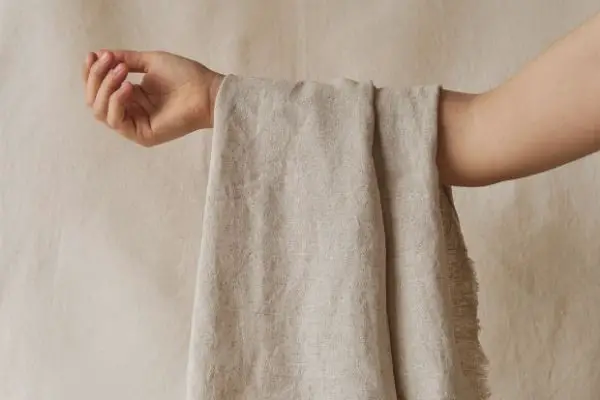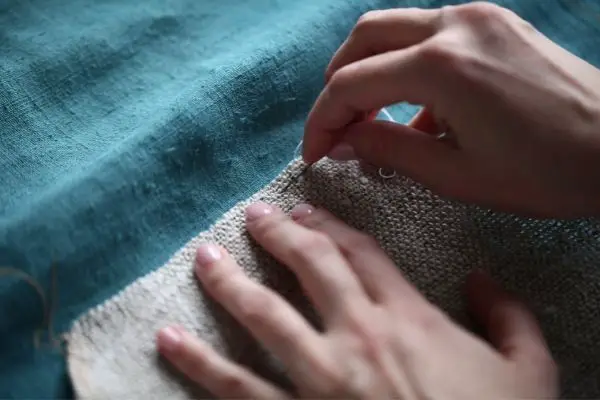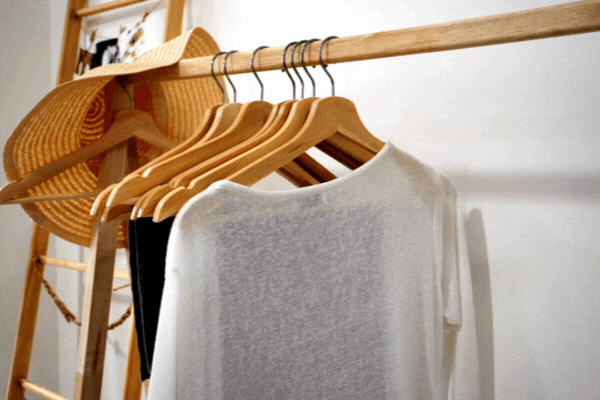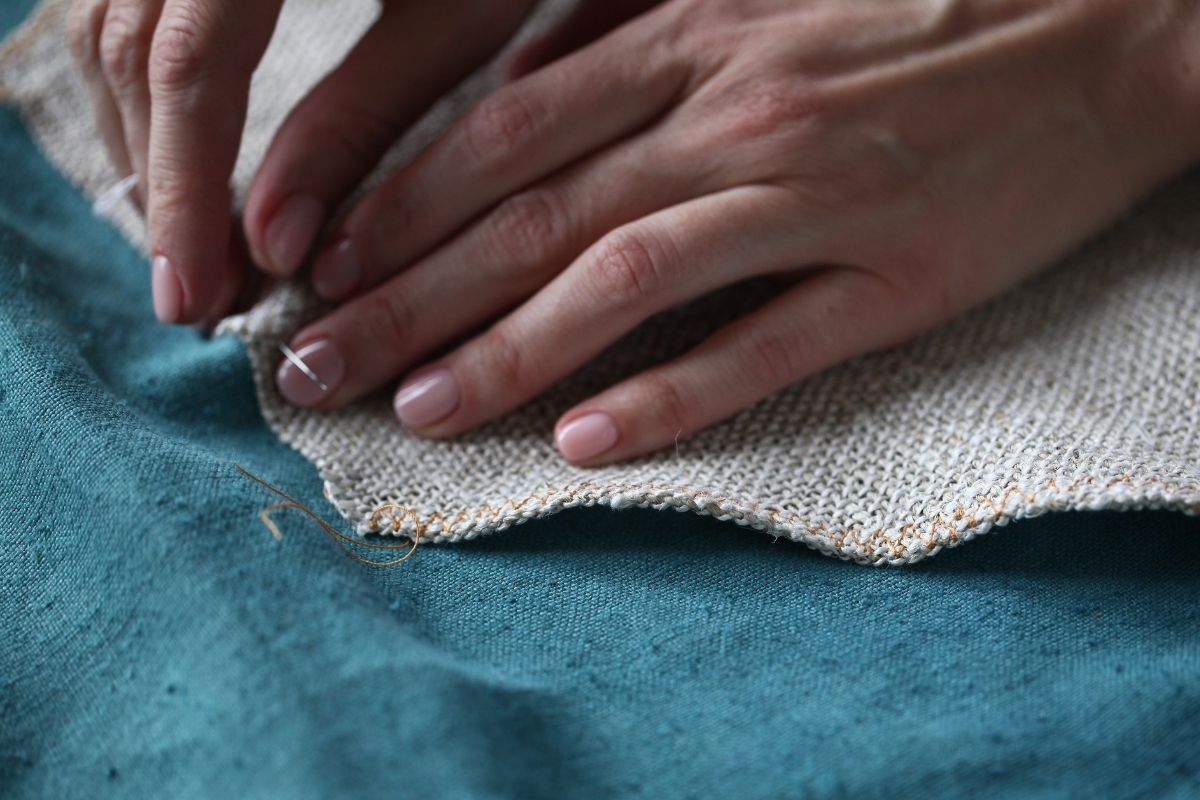Hemp Clothing Benefits | Eco Friendly Clothes
Sustainable fashion is one of the hottest topics in the green living community.
While more eco-friendly manufacturing practices are an important step in the right direction, an even bigger impact could come from reevaluating what our clothing is actually made of!
We’re not just talking about synthetic fabrics, either. Even cotton, the most prevalent natural fiber in the textile industry, is far from the best option.
Hemp offers many of the qualities of cotton while using fewer resources, lasting longer, and providing better protection from the environment.
Hemp clothing has been around for millennia. But it was largely absent from modern fashion until very recently… Fortunately, that is changing!

Modern brands such as WAMA hemp underwear are bringing hemp garments to our closets.
What Is Hemp Clothing?
Hemp clothing is manufactured from the fibers of the Cannabis sativa plant.
Most people know that hemp is closely related to marijuana. Yet few understand the actual difference between industrial hemp and its hallucinogenic cousins!
The key distinction between a hemp plant and a marijuana plant is the concentration of a naturally occurring compound called tetrahydrocannabinol (THC).
Cannabis sativa varieties (often labeled as Cannabis sativa L.) containing 0.3% or less of THC are legally classified as hemp plants. Varieties containing more than 0.3% of THC are considered marijuana plants.
In other words, it’s physically impossible to experience a “high” from any part of a hemp plant.
How Is Hemp Clothing Made?
Hemp clothing is made much the same way garments are made from other organic fibers like cotton or flax.
The fibers used in hemp clothing are harvested from the plant’s stalk. Hemp fibers are long and incredibly strong — during the plant’s life they are responsible for structural support.
Once harvested, hemp fibers are spun into thread. This thread is then woven to produce a continuous piece of fabric.
From there, constructing a piece of hemp clothing is no different than any other sewing project!
6 Benefits of Hemp Clothing
1. Sustainable
Hemp fabric’s growing popularity in the eco-conscious sphere is no accident. After all, hemp is much more sustainable than cotton and other common natural fibers.
Hemp plants require less water, fertilizer, and other resources than similar fiber crops.
Hemp-producing varieties of Cannabis sativa are naturally pest-resistant and have a minimal impact on the land they’re grown on.
Up to twice as much hemp can be grown on the same number of acres when compared to cotton. And fibers can be harvested as many as three times per year from a single crop.
2. All-Natural
Unlike some other fast-growing cotton alternatives — i.e., bamboo rayon — hemp fibers do not need to be heavily processed. The fibers can be taken straight from the plant and woven into thread.
Fabric made from 100% hemp (or a mixture of hemp and other natural fibers) is entirely biodegradable.
Hemp fabric won’t shed polluting microfibers when laundered like many synthetic textiles will.
3. Extremely Durable
Hemp fibers are very strong without being too heavy. On average, hemp has three times the strength of cotton.
This also adds to the sustainability of hemp clothing. The longer a garment lasts, the fewer resources are needed to replace it in the future!
I have certainly noticed that my hemp underwear lasts way longer than my cotton pieces without developing those unattractive little holes.

4. Breathable & Moisture-Wicking
Most natural fibers are breathable. But hemp is even more breathable and moisture-wicking than cotton and other alternatives.
Hemp holds onto fewer odor-causing bacteria than many other textiles. It’s extremely resilient against moisture damage and things like mildew, saltwater, and mold.
Hemp clothing is ideal for summertime, especially when working up a sweat. It can also help maintain your body temperature during winter!
5. UV Protection
Hemp is naturally one of the most effective fabrics against harmful UV exposure.
During tests, hemp fibers blocked 99.9% of UV-A and UV-B rays. It significantly outperformed cotton, along with highly-rated textiles like synthetic fabrics, denim, and wool.
6. Softens With Age
While hemp clothing can feel stiff or rough compared to synthetic fabrics and cotton, it will soften with each wash.

Despite the dramatic improvement to hemp’s softness over time, it won’t lose any of its inherent strength or protective qualities.
Are There Any Drawbacks To Hemp Fiber Clothing?
The biggest downside to hemp clothing is the price point.
Several things contribute to the steep price of hemp clothing, including legal oversight and a lack of existing infrastructure.
On a positive note, some hemp clothing brands also cost more because they adhere to fair labor practices.
Otherwise, hemp clothing is susceptible to many of the same issues as other all-natural textiles.
Hemp fabric is very prone to wrinkling – a bit like linen. Wrinkles can be prevented or removed during laundering.

However, those accustomed to the wrinkle resistance of synthetic fabrics might be turned off by this characteristic.
If you gravitate toward an ultra-vibrant wardrobe, shopping for hemp clothing may be disappointing. Hemp doesn’t absorb or retain dyes as well as synthetic fabrics and most garments feature muted colors.
Improved techniques and dye formulas are constantly being developed by the textile industry. But hemp clothing may never be as bright as that made of polyester or rayon.
Frequently Asked Questions
What is hemp fabric used for?
T-shirts, jeans, dresses, kitchen cloth, underwear are some of the most common use for hemp fabric.
Is hemp legal everywhere?
The United States’ decision to legalize industrial hemp made huge headlines in 2018. But the legality of Cannabis sativa L. still varies greatly around the world.
Most laws regarding hemp restrict the ability to grow it. So buying hemp clothing is often possible even in places where hemp production is banned!
However, these products may be harder to find and more expensive than in areas where hemp is 100% legal.
If hemp clothing is readily available in local stores, you can probably assume that selling hemp products is legal in your area.
Can you be allergic to hemp?
The human body can develop allergies to nearly anything, including plant byproducts like hemp.
Fortunately, allergies to hemp fabric typically arise as itching, redness, hives, and similar skin-level symptoms. These contact reactions can be easily treated and then prevented by discontinuing the use of hemp clothing.
More severe symptoms can occur when Cannabis sativa is ingested or inhaled. But that’s a conversation for another day!






